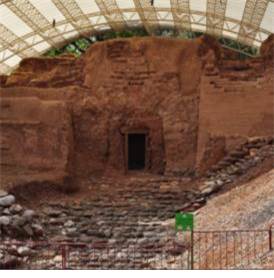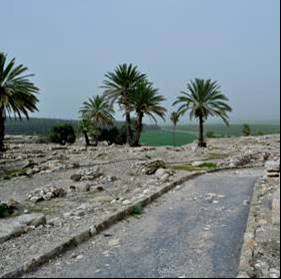 In 1616 the Catholic Church condemned the views of Copernicus for taking the radical scientific view that the Earth revolved around the sun. Against precise mathematical calculations and empirical data, the church based their dogmatic rejection on the “clear” reading of Scripture, theology, and experience. Case closed. The Catholic Church wasn’t alone in resisting the Copernican revolution. Luther is reported to have said in response to news about Copernicus’s new theory, “Whoever wants to be clever must agree with nothing that others esteem. He must do something of his own. This is what that fellow does who wishes to turn the whole of astronomy upside down. Even in these things that are thrown into disorder I believe the Holy Scriptures, for Joshua commanded the sun to stand still and not the earth.”
In 1616 the Catholic Church condemned the views of Copernicus for taking the radical scientific view that the Earth revolved around the sun. Against precise mathematical calculations and empirical data, the church based their dogmatic rejection on the “clear” reading of Scripture, theology, and experience. Case closed. The Catholic Church wasn’t alone in resisting the Copernican revolution. Luther is reported to have said in response to news about Copernicus’s new theory, “Whoever wants to be clever must agree with nothing that others esteem. He must do something of his own. This is what that fellow does who wishes to turn the whole of astronomy upside down. Even in these things that are thrown into disorder I believe the Holy Scriptures, for Joshua commanded the sun to stand still and not the earth.”
Within a couple generations the conservative, Bible-believing Christians—Catholic and Protestant—had to swallow their pride and admit that Copernicus—that rascal!—was right. And in 1999 the Pope even apologized . . . sort of.
Fast forward a century or so. In the midst of the liberal political and religious philosophies of English gentlemen like John Locke, a new concept of tolerationism, pluralism, and democracy began to gain support. The problem, of course, was the absolute, divinely-ordained rule of the King of England and other monarchs. The conservative theologians defended the divine right of the Monarchy and appealed to Scripture and theology to denounce the liberal philosophies churning in the colonies. The political conservatives found themselves on the side of the King—and of political philosophers like Thomas Hobbes. “Liberals” like Thomas Jefferson and George Washington rejected the doctrine of divine monarchy in favor of a concept of divinely-endowed inalienable individual rights (which, on last check, still cannot be found in the Bible).
Within a couple generations, however, the liberal political philosophy of Locke and Jefferson became the fabric of American patriotism and were suddenly found to be in perfect agreement with the revelation of Scripture. In fact, those liberals are now regarded as our conservative Christian forefathers!
A hundred years later conservative Christians appealed to the Bible to battle a new threat to social and religious order—the movement among “liberal” New England Congregationalists toward emancipation of the slaves and abolition of slavery. The conservatives appealed to the sanctioning of slavery in Scripture (both in the Old and New Testaments) as proof that the progressive movement to free the slaves was unbiblical. Denominations split over the issue—Northern and Southern Baptists; Northern and Southern Methodists . . . both sides appealing to Scripture, but the “progressive” or “liberal” view sounded the radical cries for freedom.
Within a couple generations the conservatives began reading those passages in the Bible differently and the evils of modern slavery were finally seen for what they really were: evil.
A century later the civil rights movements in the United States were spearheaded by liberals—religious and social progressives who were attacked by conservatives who appealed to a diverse line of arguments to defend institutional and corporate bigotry and hate: the distinction between Jews and Gentiles . . . Old Testament laws regarding foreigners and women . . . “clear” passages of Scripture that forbade women to even speak in church . . . the curse of Ham . . . the biblical principle of social order and peace. All of these were part of the conservatives’ arsenal against liberals who wanted justice and equality. Sadly, conservative evangelical colleges and seminaries were slow to admit women and minorities into programs for theological training.
Within a couple generations the conservatives came to regret their policies and actions and the narrow, bigoted way they read God’s Word in favor of their own misguided agendas.
As you can see, conservative Christians may have a great track record of preserving and defending the fundamental marks of orthodox doctrine, but they have a disturbing history of missing the mark on many scientific and social issues. Not all, of course, but some. They were critical and wicked when they should have been supportive and righteous (as in the case of slavery and civil rights). Or they were foolish and extreme when they should have been prudent and wise (as in the case of Y2K or the “New Order” conspiracy theories about the end of the world).
This brings me to my point.
What issues today are conservative Christians going to regret in fifty years? Will our children or grandchildren shake their heads and cluck their tongues at some of the things we evangelicals took a firm stand against? Or will they be embarrassed about some of the things we enthusiastically promoted? Some things, of course, we must stand against (heresy and sin) and some things we must promote (sound theology and morality). These things have never changed and have always been under attack. These things we have always defended and never regretted. (Though, of course, we may reg0ret the unloving, un-Christlike ways in which we promoted and defended the truth.)
But what about, say, global warming? Seriously, what do most evangelical Christians and conservative Republicans really know about the science of global warming? What qualifies right-wing talk show hosts to objectively sift through scientific data and determine that it’s all bunk? And why do evangelical Christians allow big businesses, ritzy politics, and glorified DJs to lead them around by their noses?
I’m no scientist. I honestly can’t tell you one way or the other if Al Gore, the Democrats, and all those Scandinavian scientists are right about the world “melting.” But as a historian of Christianity, I can tell you one thing for sure: when it comes to issues other than classic orthodoxy and Christlike morality, we conservatives have a rich and interesting history of being found on the wrong side.
There’s nothing biblically, theologically, or rationally unsound about the idea of global warming. (Unless you say the whole earth is going to flood.) In fact, with my dim view of humanity, I’d almost expect us to be destroying ourselves and our world through greed, selfishness, laziness, ignorance, and apathy. Just take a look at people’s eating habits at fast food restaurants and tell me these same fallen humans wouldn’t melt the planet rather than give up their SUVs. Again, I have no idea if the world is warming. I hope not. But I’m not going to be one of those people my grandchildren point to and say, “Why was grandpa such a dumb Christian?”
Heliocentrism . . . divine monarchy . . . slavery . . . civil rights. Next time you dismiss the possibility of global warming as loony poppycock or liberal propaganda, run this list through your mind. Then use that same mind for the reason God gave it: to think. I don’t know if climate change scientists and global warming advocates are off their rockers. Maybe they are jumping to conclusions. Maybe not. Maybe they’re more right than wrong. Or maybe they’re off their rockers. But then again, Copernicus, Locke, Lincoln, and MLK, Jr. all appeared to be a little “off” in their own days, didn’t they? So, until the issues of global warming and man-made climate change is thoroughly explored, debated, and settled, I’m going to suspend judgment. And unless you’re God or a purely objective scientist who can perfectly and simultaneously process all the data and guarantee a right answer . . . you best shut up, too.




